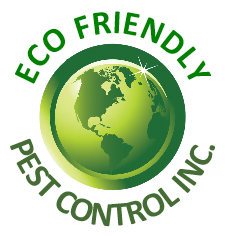
ECO-FRIENDLY PEST CONTROL INC.
Sun - Thur: 8AM - 8PM


Sun - Thur: 8AM - 8PM
Bedbugs are small, nocturnal insects that feed on the blood of humans and animals, leaving behind itchy bites...
learn more Cockroaches can contaminate food and surfaces with their saliva, feces, and shed skin, potentially spreading diseases...
Earwigs feed on a variety of organic matter, including dead insects and decaying vegetation. They can be found...
learn more Spiders prefer quiet, undisturbed areas like corners, basements, or attics, where they can find prey and shelter...
Ants can enter buildings through tiny cracks and openings, creating trails along walls or floors. They can contaminate...
learn moreWasps can become a nuisance when their nests are built near human activity or when they search for food around outdoor gatherings...
learn more Bees can be a concern if they establish their hives in close proximity to human activity. They are generally not aggressive unless...
They can carry bacteria and disease-causing pathogens on their bodies, potentially contaminating food and surfaces...
learn moreMoths are generally harmless to humans, although certain species, such as clothes moths, can cause damage to fabrics and textiles...
learn moreStink Bugs release a pungent odor from glands on their abdomen as a defense mechanism. Stink bugs are plant feeders and can...
learn moreRaccoons can rummage through garbage cans, compost bins, and outdoor food sources...
learn more Rodents are prolific breeders and can quickly infest an area if left unchecked. They contaminate food and can transmit diseases
Squirrels can damage homes and structures by chewing openings through the siding and underneath eaves...
Skunks dig burrows or use existing dens for shelter, often found under decks, sheds, or in crawl spaces. When threatened...
Bats can squeeze through small openings to access roosting sites such as attics and abandoned buildings...
learn moreFleas feed on the blood of mammals and birds. They are known for their impressive jumping ability, which allows them to leap great distances relative...
LEARN MOREThis website uses cookies to ensure you get the best experience on our website.